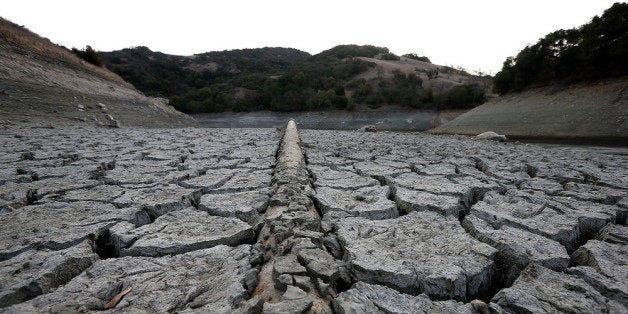
In February, I wrote about the dire situation in California due to the ongoing drought. Sadly, conditions haven't improved. California continues to experience record drought conditions, with 2014 likely to become the third-driest year on record. This comes on the heels of two dry years. Most reservoirs in the state are at less than half of their maximum capacity.
To cope with this, the Santa Clara Valley Water District in February set a countywide target of 20 percent water use reduction to conserve groundwater levels. As of the end of July, there has only been a reduction of 11 percent. As the drought continues, with no relief in sight, we must do a better job of conserving the limited water that is available.
The water bond passed by the California Legislature, and signed by Governor Brown, will appear as Proposition 1 on the November ballot. Proposition 1 is a bipartisan measure that would fund above- and below-ground storage projects, regional water reliability, safe drinking water, water recycling, water conservation, groundwater management and cleanup, watershed protection, and statewide flood management.
This historic drought is being exacerbated by long-term changes in our climate. This week, the United Nations World Meteorological Organization reported that greenhouse gas levels reached a record high in 2013. The report also says that greenhouse gas levels have increased more in 2013 than other years because the biosphere and the oceans are reaching their capacity to absorb the excess carbon dioxide that is emitted to the atmosphere.
This could signify a tipping point in the impact of increased greenhouse gas emissions. Ocean temperatures may rise more rapidly, increasing the effects on the animals that live there. This could harm the tiny organisms that make up the base of the food chain and provide us with oxygen, sending ripples up the food chain. In fact, this is already impacting the fisheries that we depend on for food.
Many people believe there is nothing they can do personally about the effects of climate change. World leaders, like Ban Ki-moon, continue to urge action on climate change now. This month, the United Nations Climate Summit in New York City will bring together world leaders, scientists and activists, to address this challenge. The day before the summit, the People's Climate March is expected to be the largest climate march in history. Even if you can't make it to New York for the climate march, you can participate by thinking about what steps you can take to shift your habits.
The drought that California is experiencing is an important example of how individuals must help their cities and the country to become more resilient in the face of shifts in climate that are likely to occur as a result of increased carbon dioxide in the atmosphere. Some municipalities are offering water audits and rebates to help families find ways they can use water more efficiently. These are the types of measures that are going to sustain California through this prolonged drought.
Change begins at home, and individuals need access to information about how they can change their behaviors to help address the problem. We need measures such as my Climate Change Education Act to help the improve public education about the nature of the problem and how people can be a part of the solution. It will take all of us, acting together, to confront climate change and its dangerous effects, including California's drought.